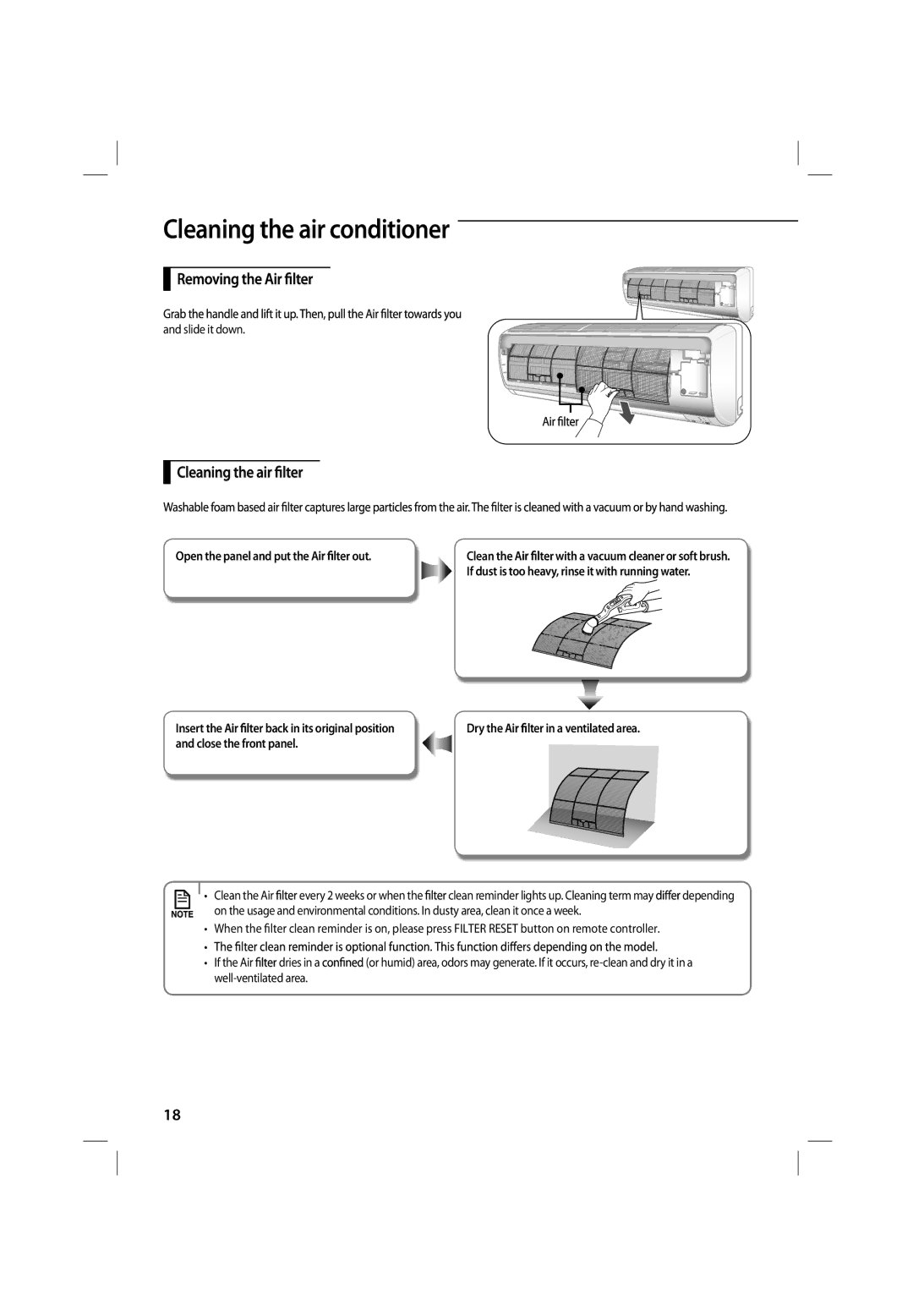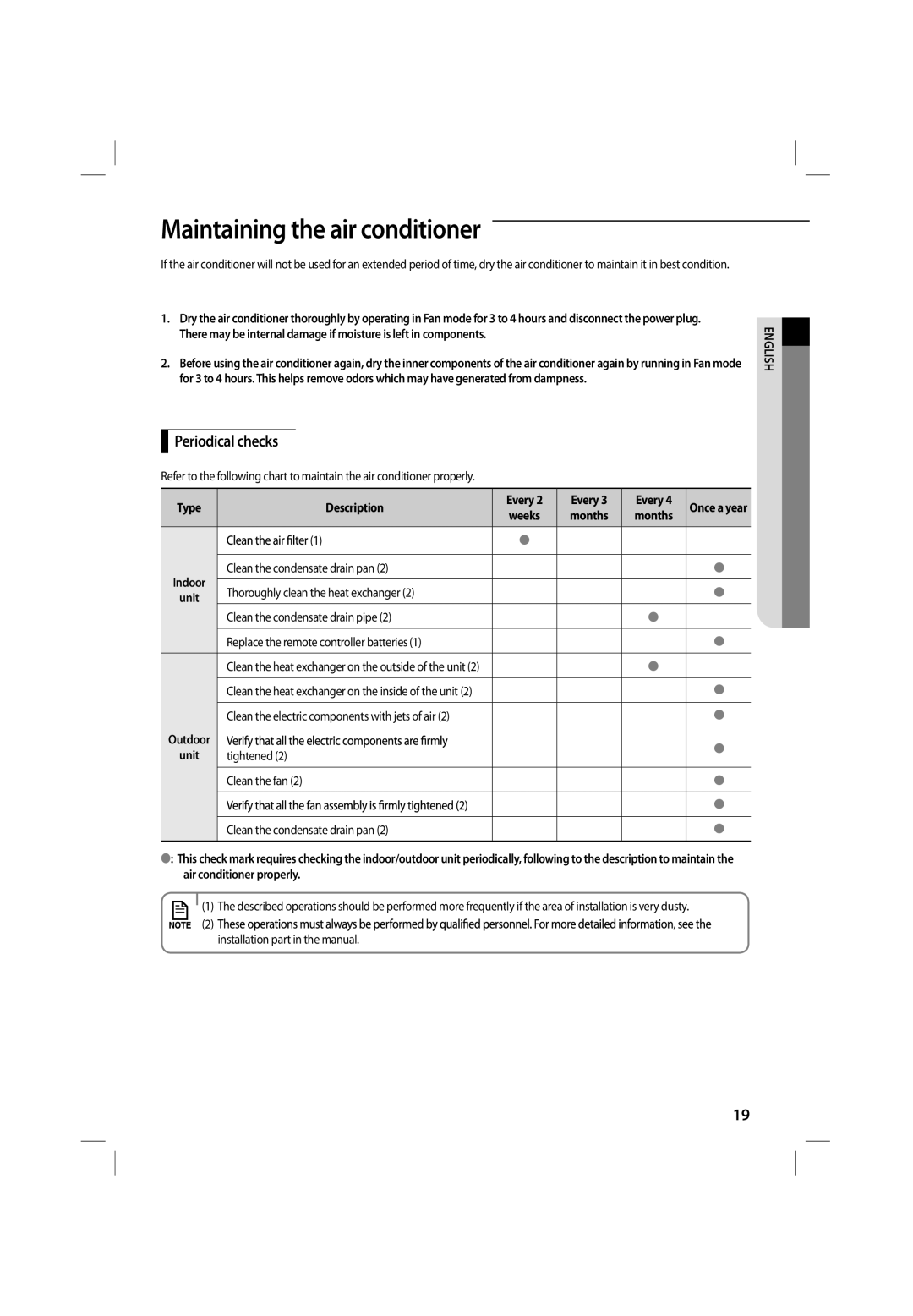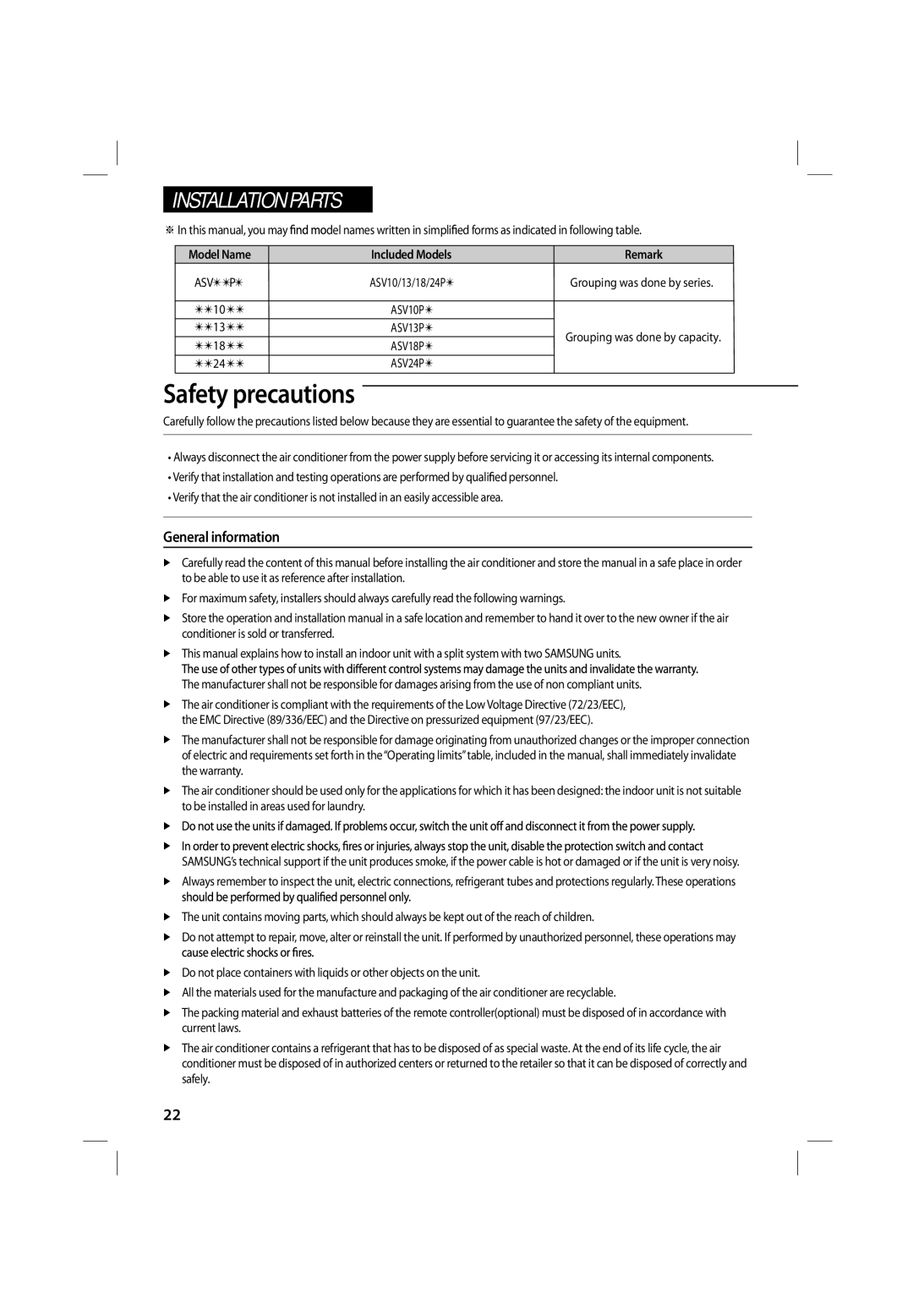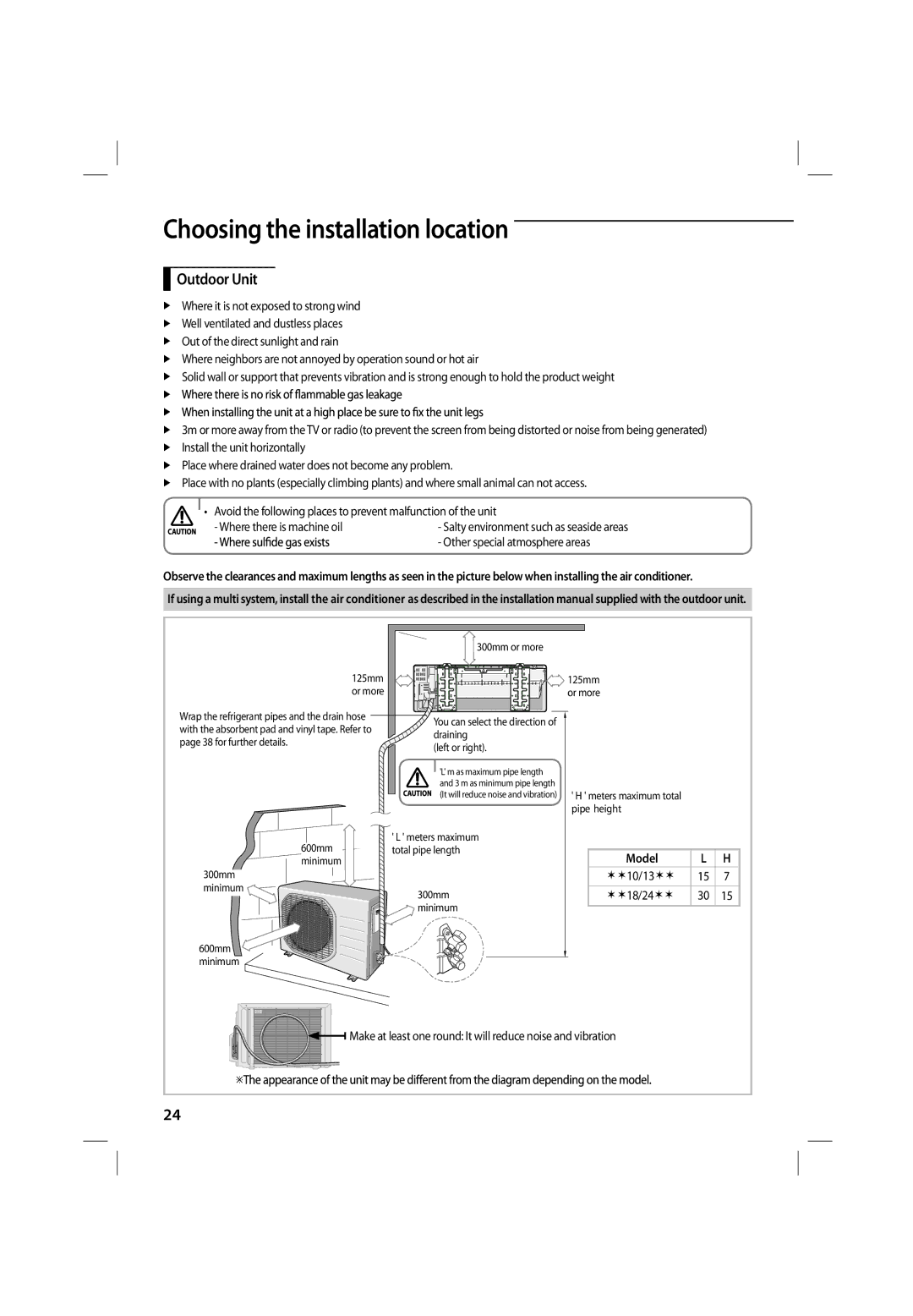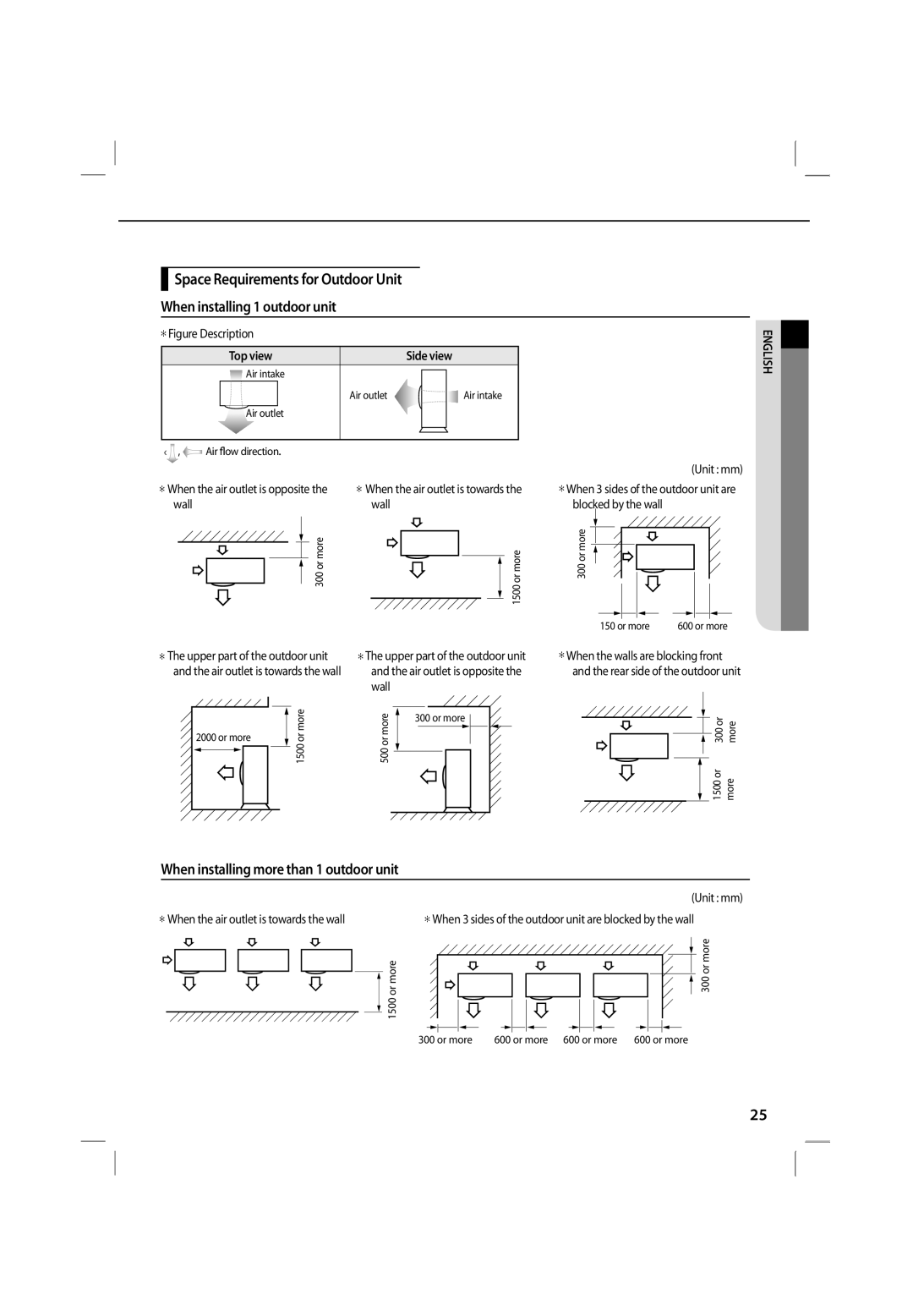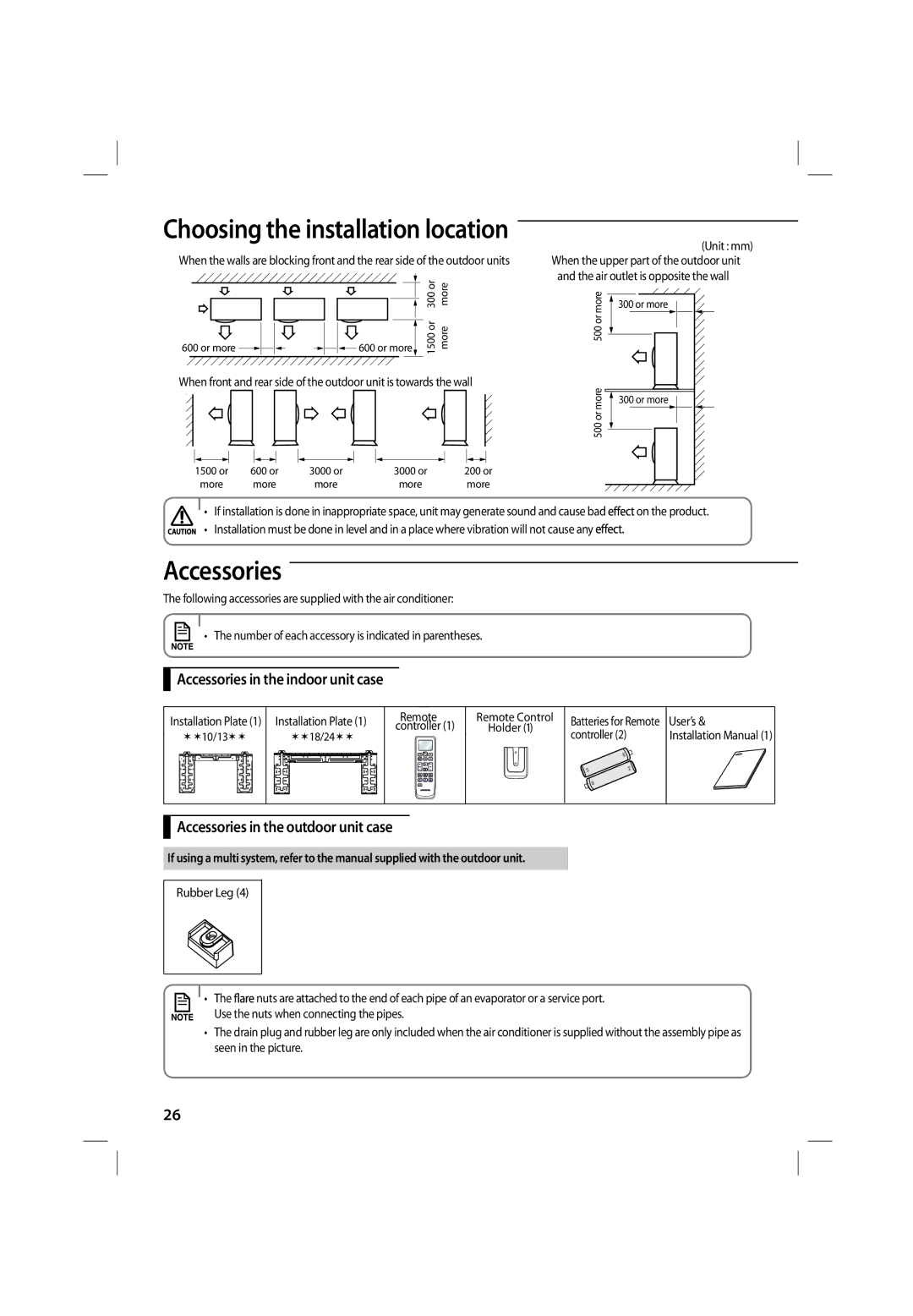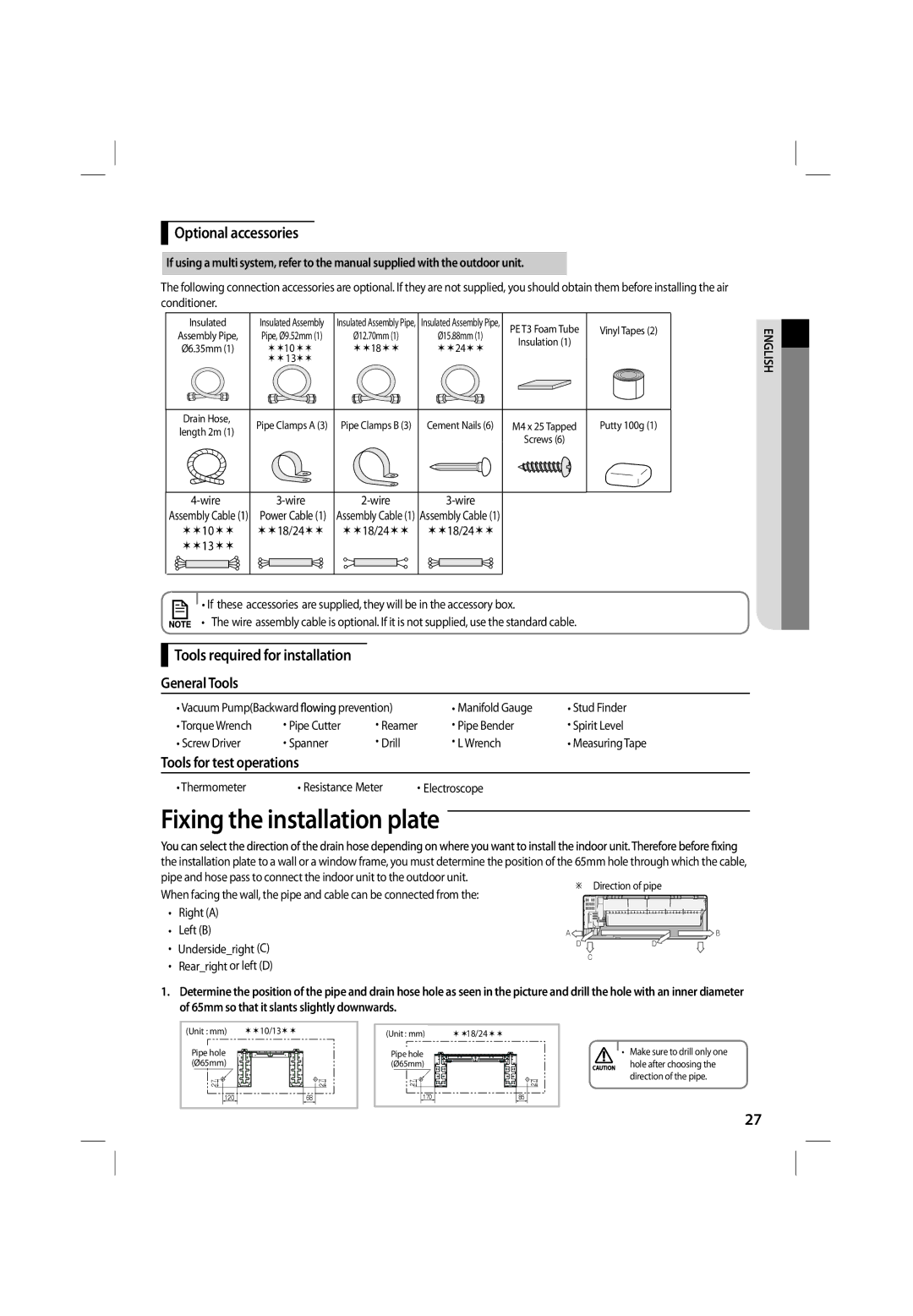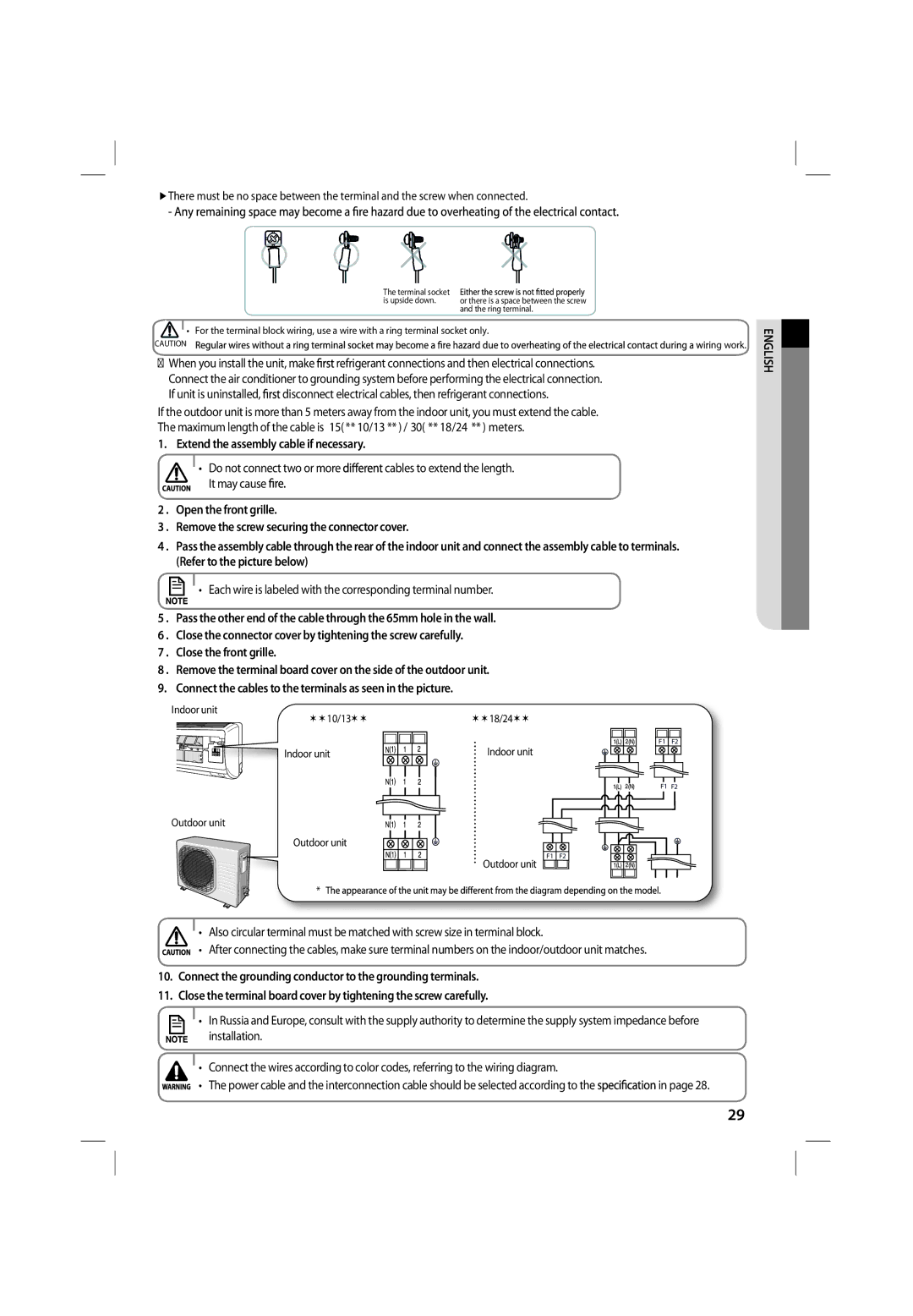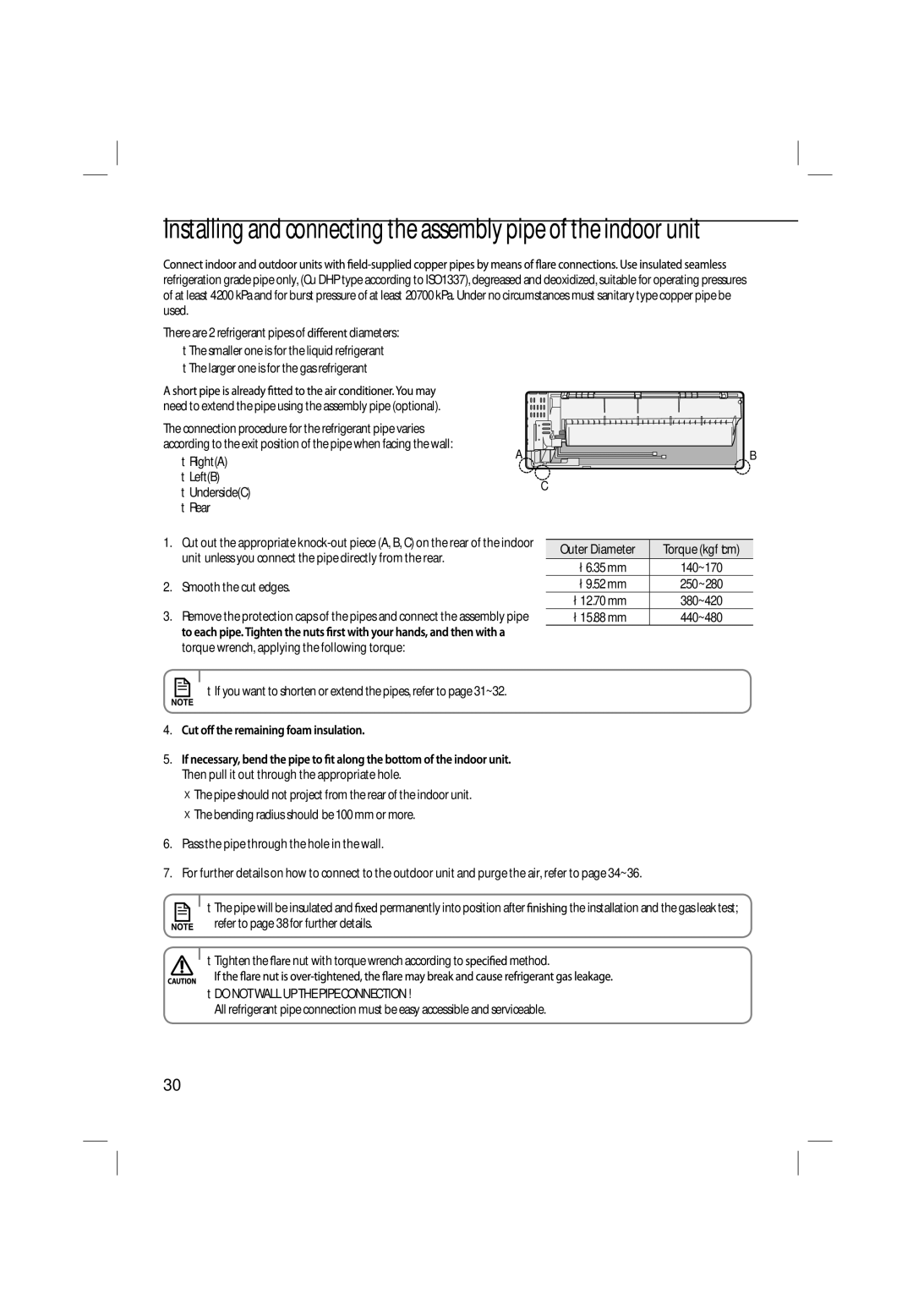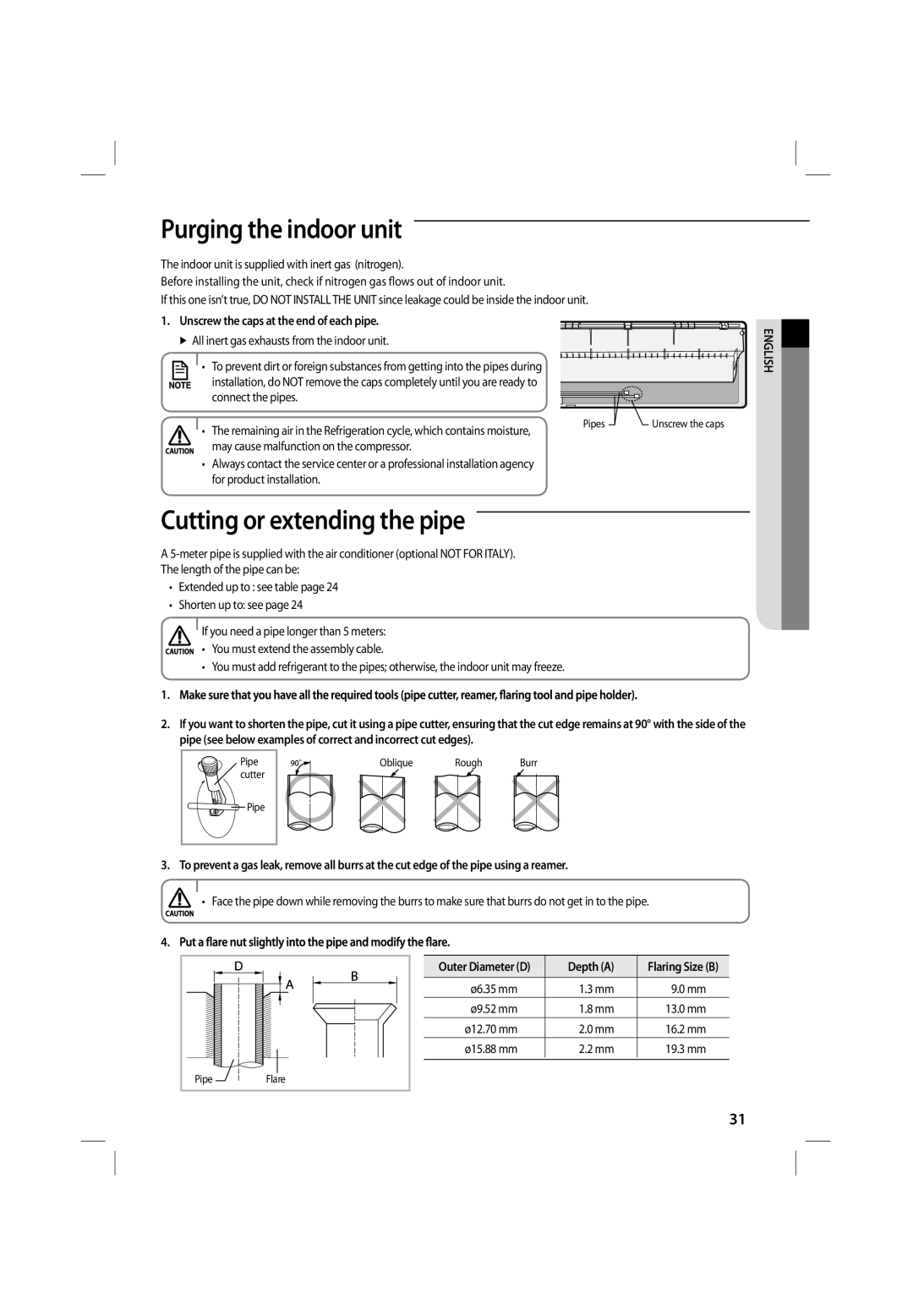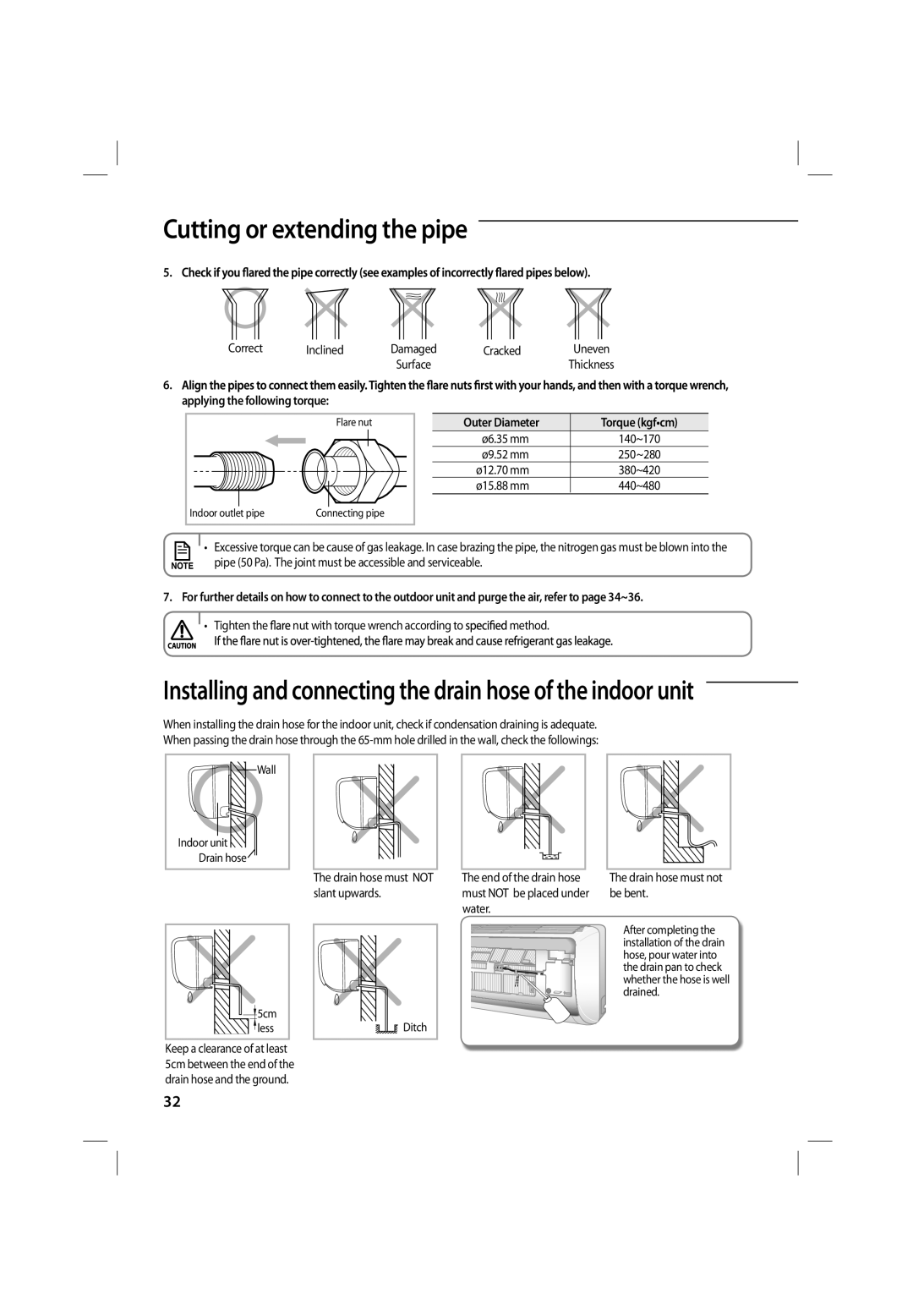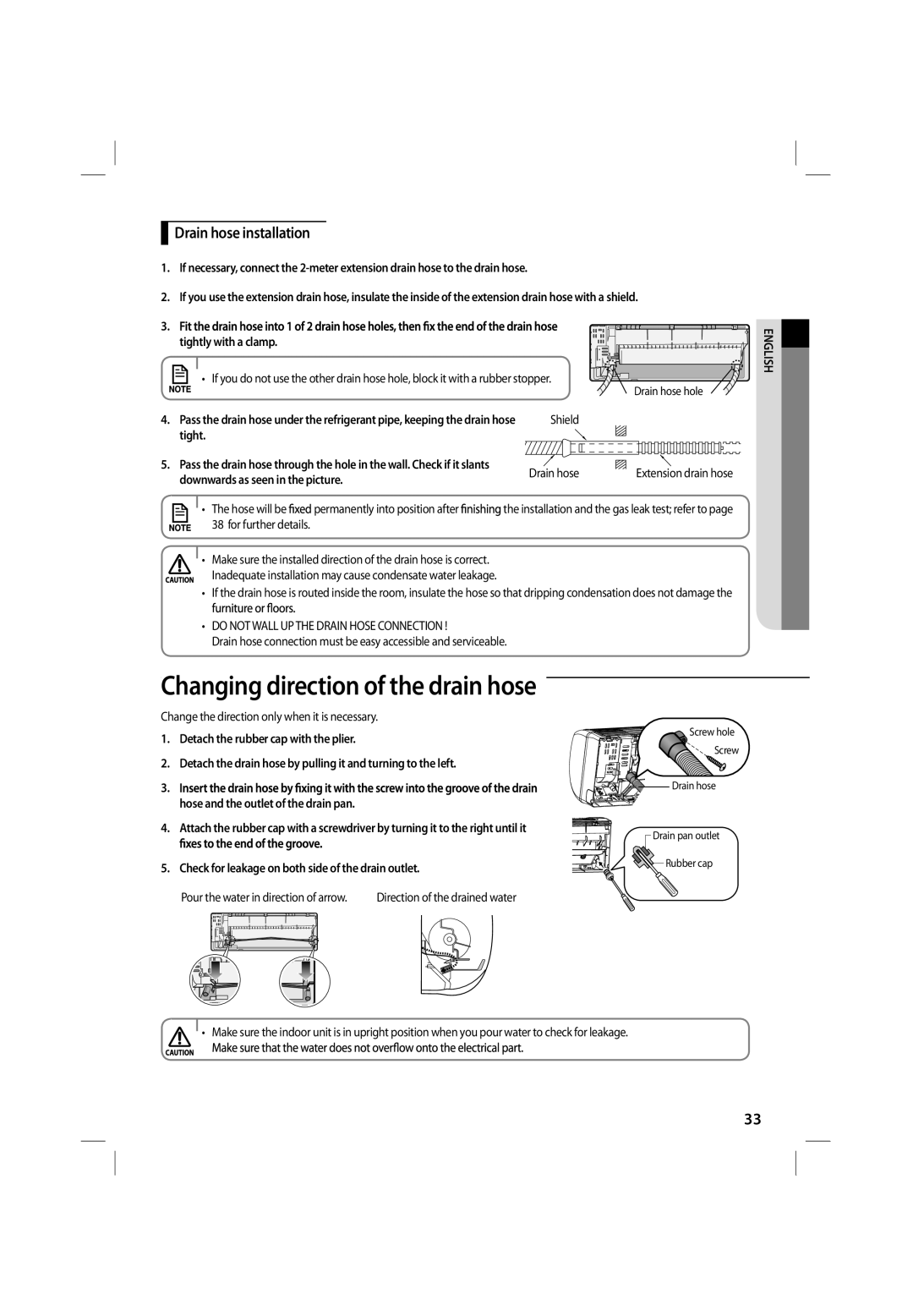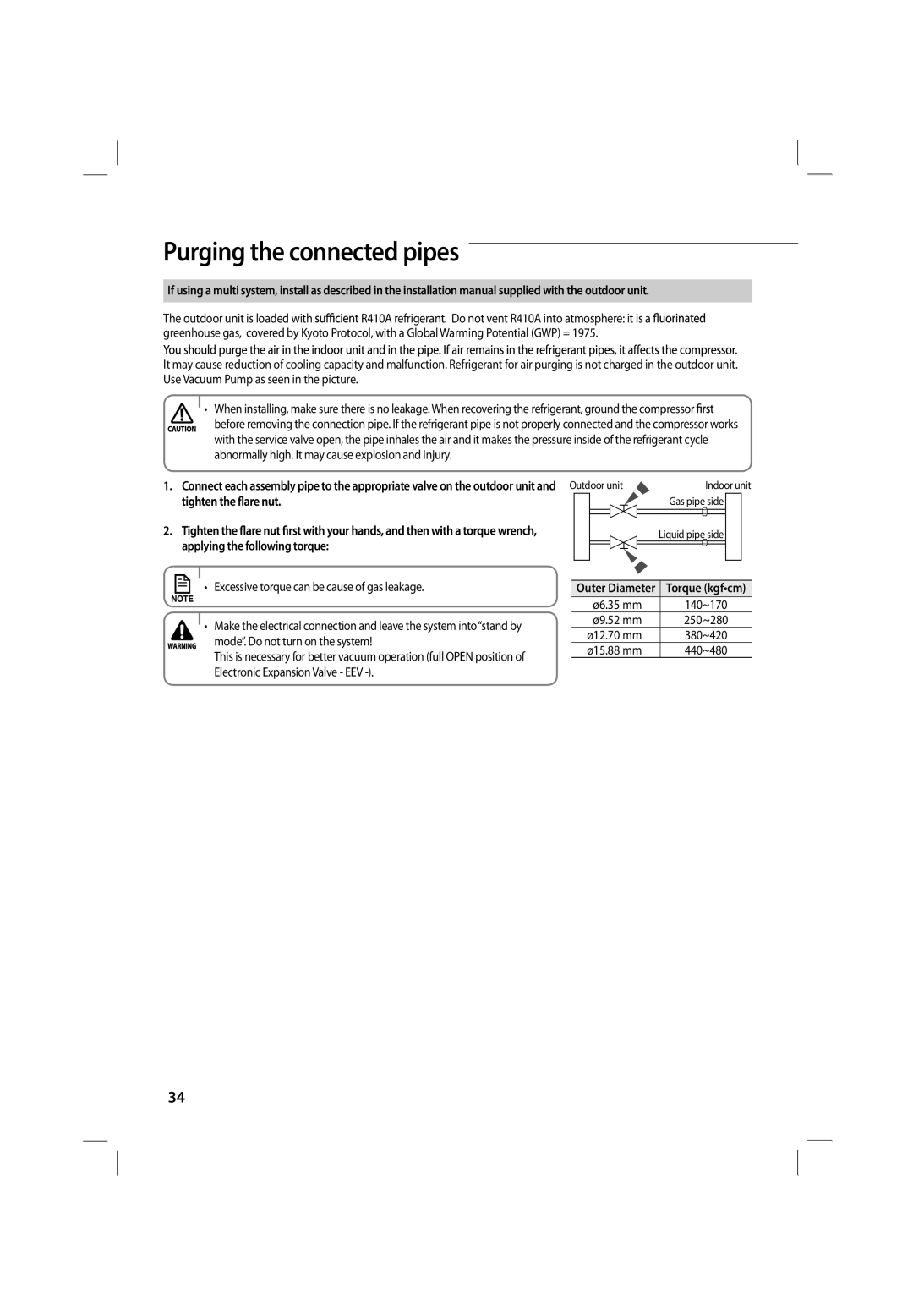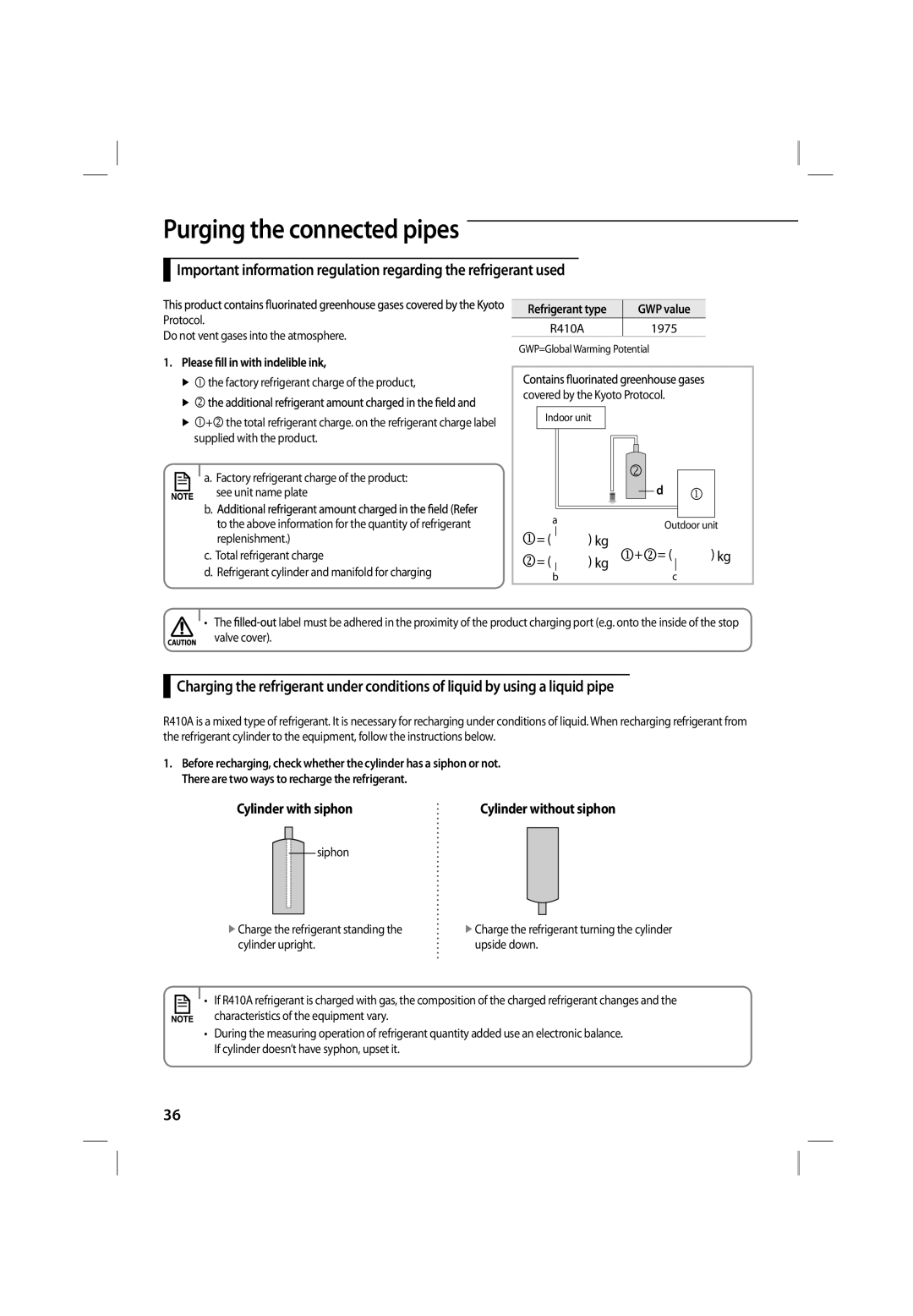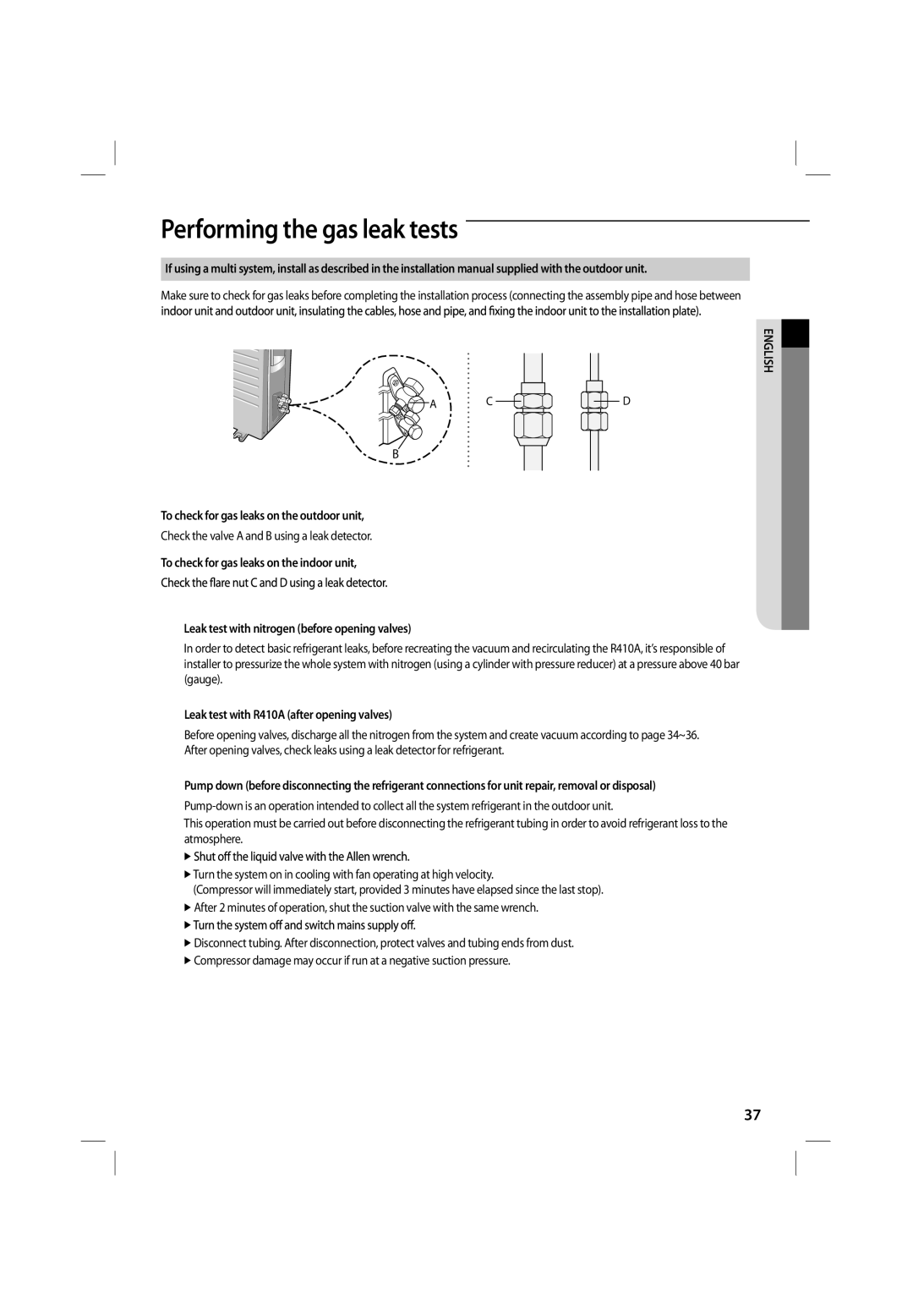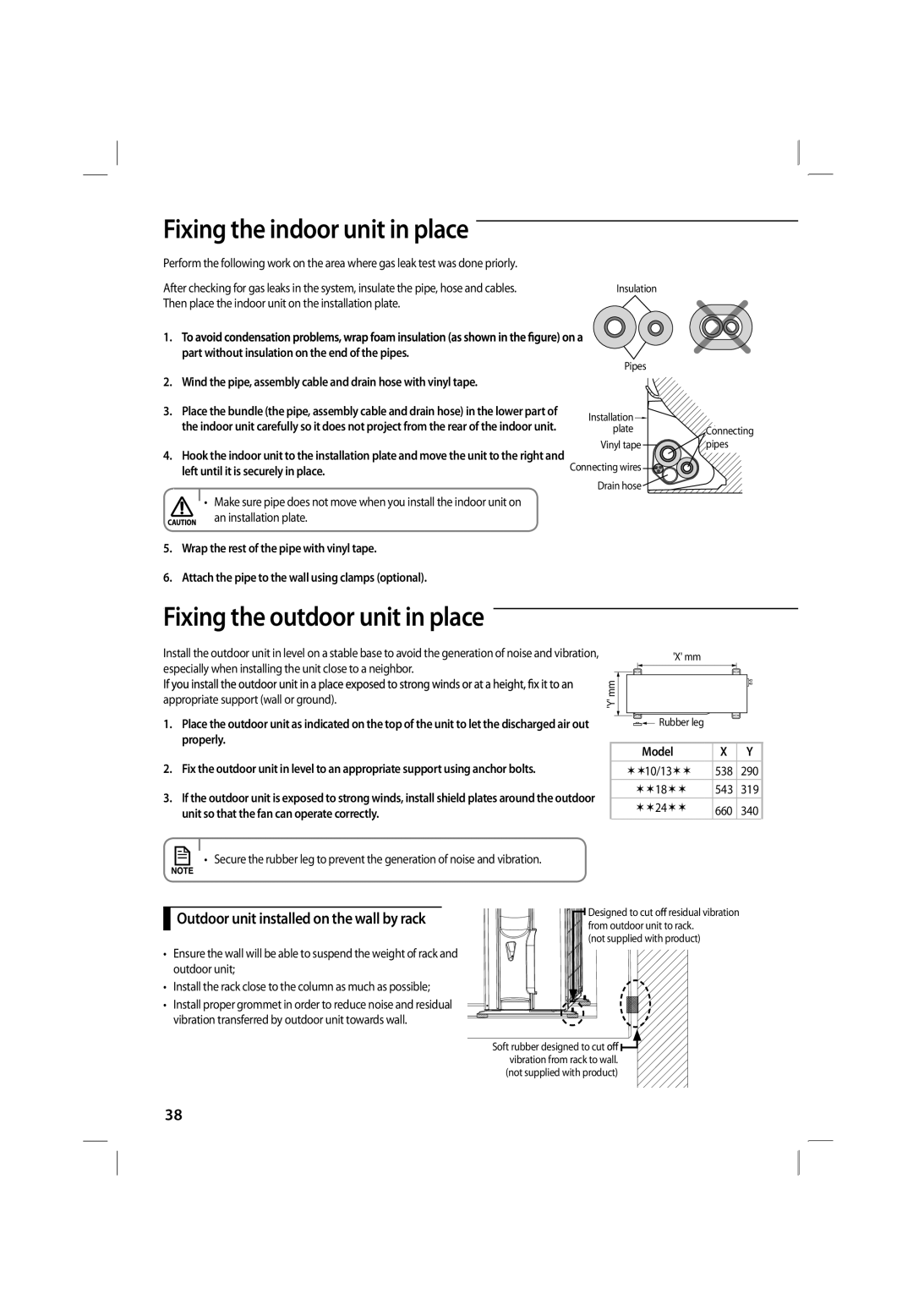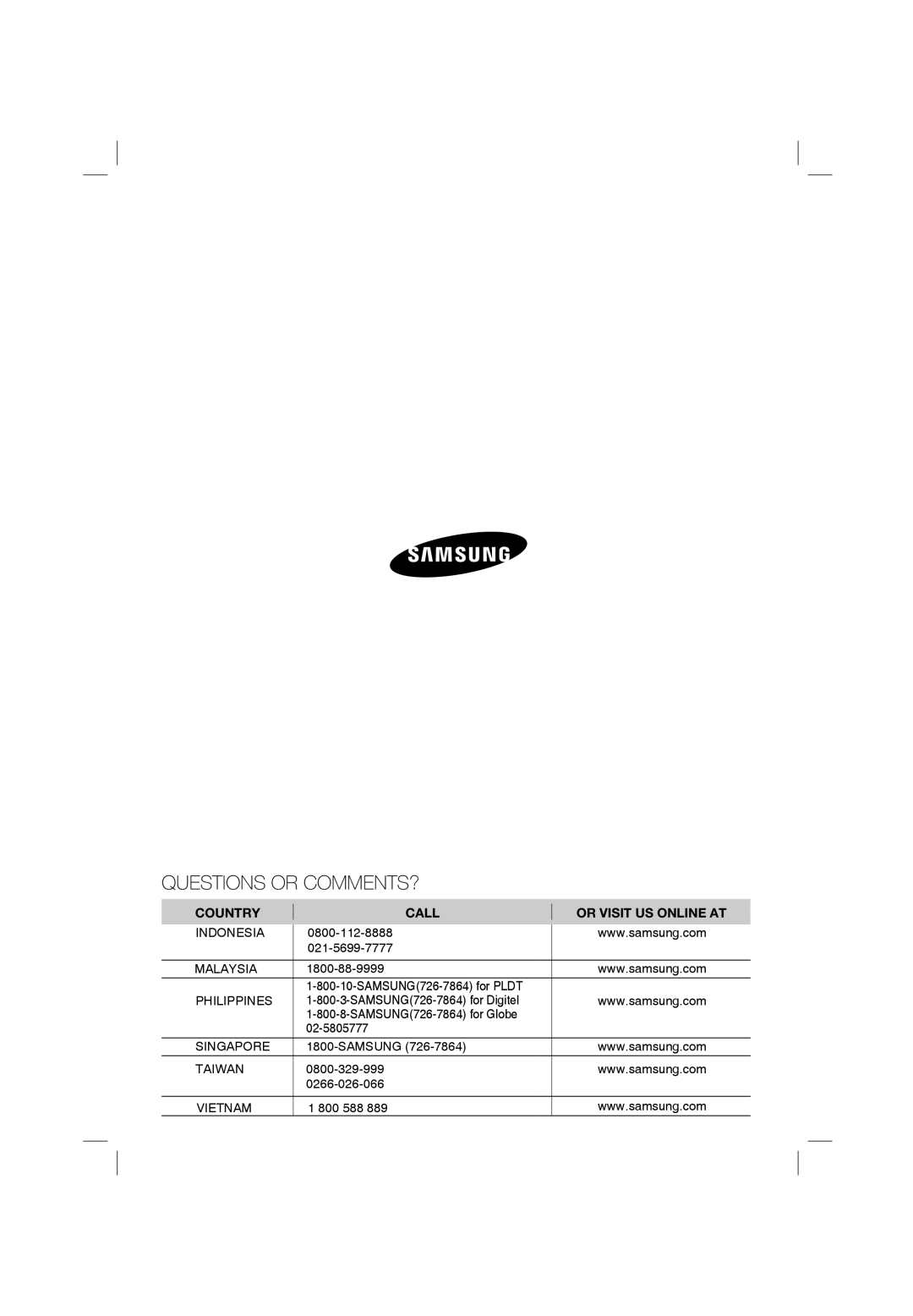
Performing the gas leak tests
If using a multi system, install as described in the installation manual supplied with the outdoor unit.
Make sure to check for gas leaks before completing the installation process (connecting the assembly pipe and hose between
![]()
![]()
![]() A C
A C ![]()
![]()
B
To check for gas leaks on the outdoor unit,
Check the valve A and B using a leak detector.
To check for gas leaks on the indoor unit,
ENGLISH
D
Leak test with nitrogen (before opening valves)
In order to detect basic refrigerant leaks, before recreating the vacuum and recirculating the R410A, it’s responsible of installer to pressurize the whole system with nitrogen (using a cylinder with pressure reducer) at a pressure above 40 bar (gauge).
Leak test with R410A (after opening valves)
Before opening valves, discharge all the nitrogen from the system and create vacuum according to page 34~36. After opening valves, check leaks using a leak detector for refrigerant.
Pump down (before disconnecting the refrigerant connections for unit repair, removal or disposal)
This operation must be carried out before disconnecting the refrigerant tubing in order to avoid refrigerant loss to the atmosphere.
![]()
Turn the system on in cooling with fan operating at high velocity.
(Compressor will immediately start, provided 3 minutes have elapsed since the last stop).
After 2 minutes of operation, shut the suction valve with the same wrench.
![]()
Disconnect tubing. After disconnection, protect valves and tubing ends from dust.
Compressor damage may occur if run at a negative suction pressure.
37
